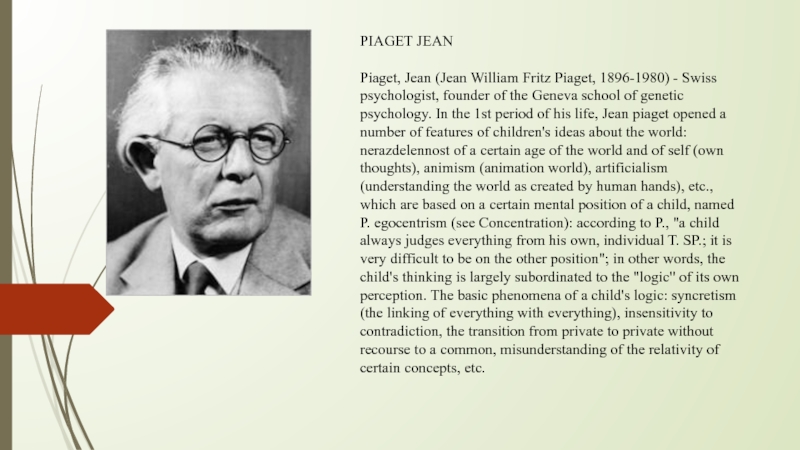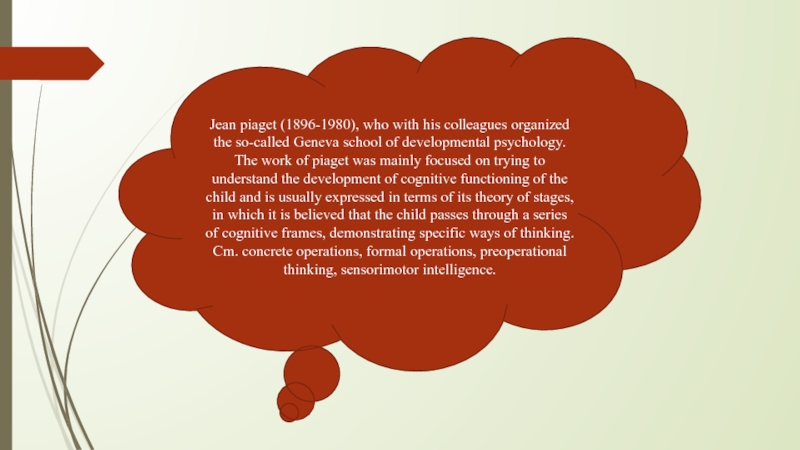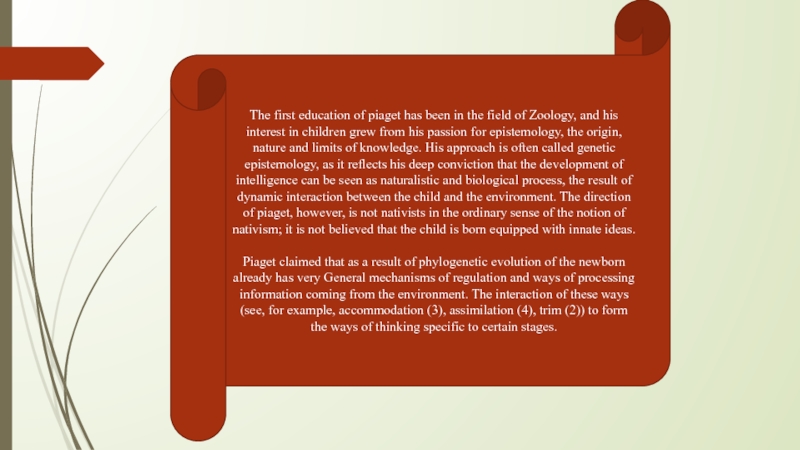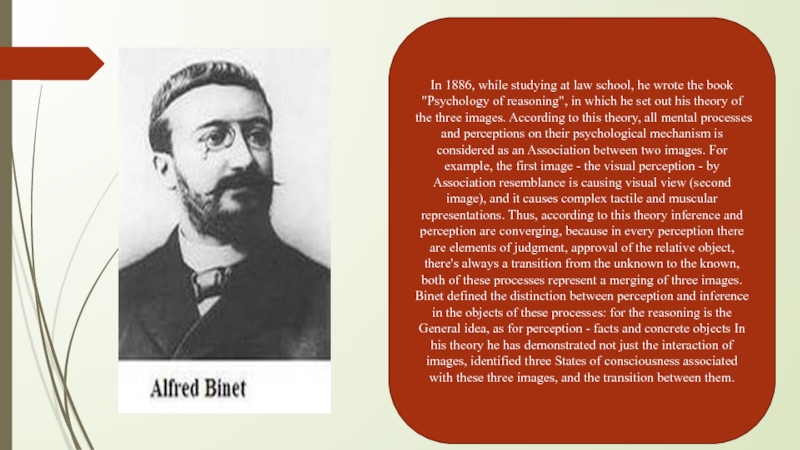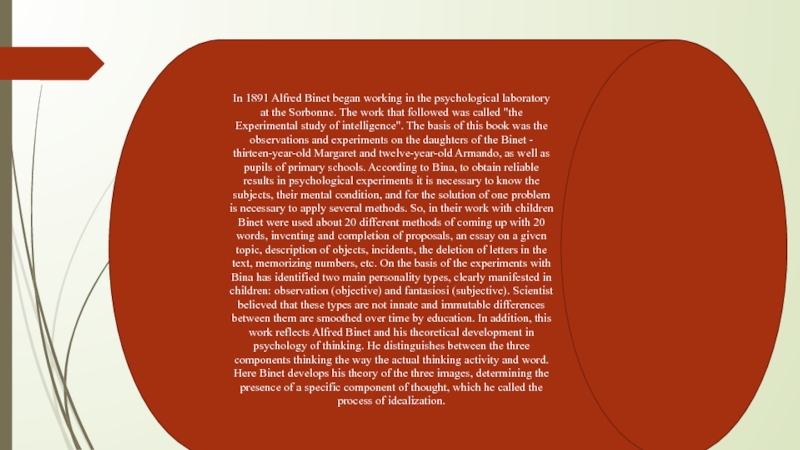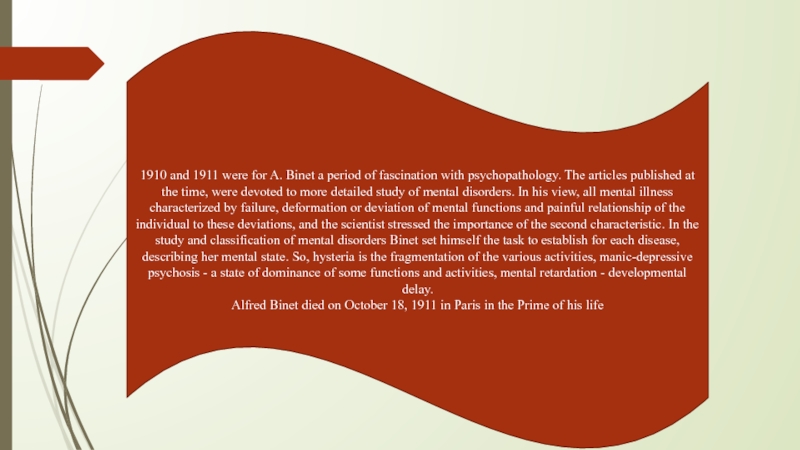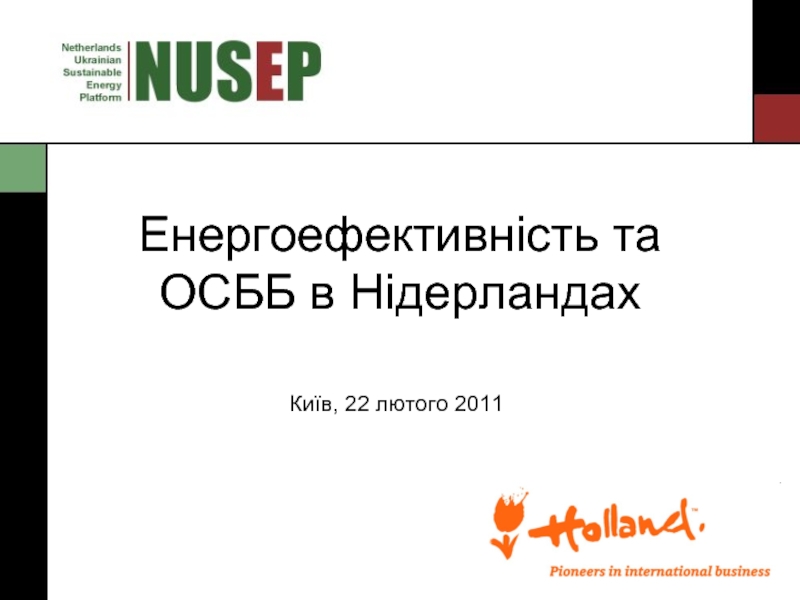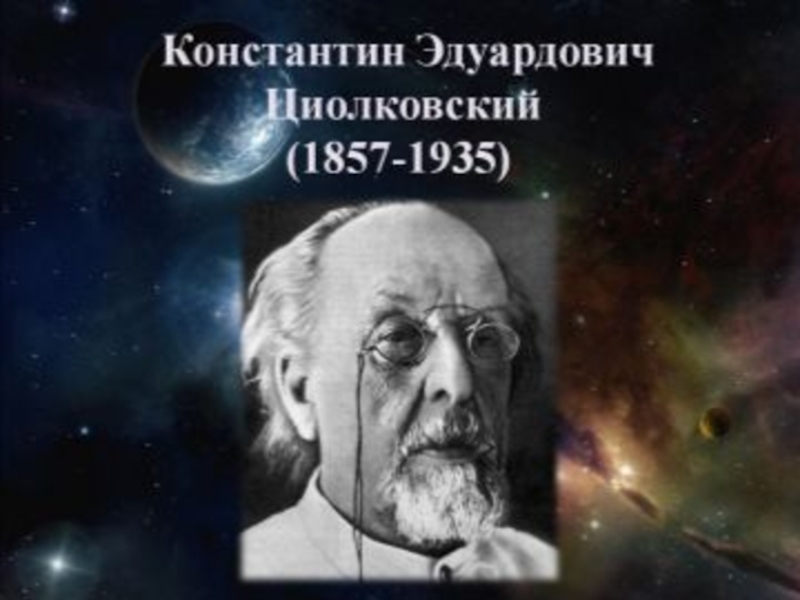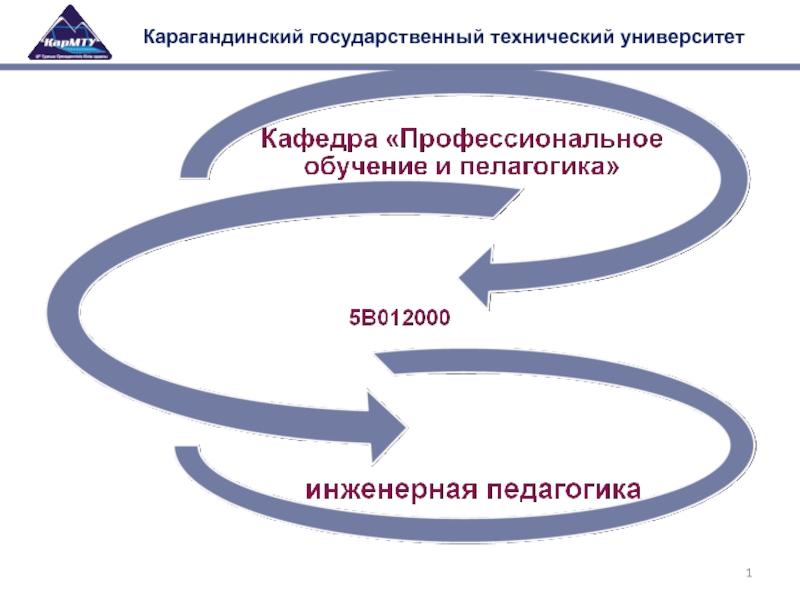founder of the Geneva school of genetic psychology. In the 1st period of his life, Jean piaget opened a number of features of children's ideas about the world: nerazdelennost of a certain age of the world and of self (own thoughts), animism (animation world), artificialism (understanding the world as created by human hands), etc., which are based on a certain mental position of a child, named P. egocentrism (see Concentration): according to P., "a child always judges everything from his own, individual T. SP.; it is very difficult to be on the other position"; in other words, the child's thinking is largely subordinated to the "logic" of its own perception. The basic phenomena of a child's logic: syncretism (the linking of everything with everything), insensitivity to contradiction, the transition from private to private without recourse to a common, misunderstanding of the relativity of certain concepts, etc.
- Главная
- Разное
- Дизайн
- Бизнес и предпринимательство
- Аналитика
- Образование
- Развлечения
- Красота и здоровье
- Финансы
- Государство
- Путешествия
- Спорт
- Недвижимость
- Армия
- Графика
- Культурология
- Еда и кулинария
- Лингвистика
- Английский язык
- Астрономия
- Алгебра
- Биология
- География
- Детские презентации
- Информатика
- История
- Литература
- Маркетинг
- Математика
- Медицина
- Менеджмент
- Музыка
- МХК
- Немецкий язык
- ОБЖ
- Обществознание
- Окружающий мир
- Педагогика
- Русский язык
- Технология
- Физика
- Философия
- Химия
- Шаблоны, картинки для презентаций
- Экология
- Экономика
- Юриспруденция
Piaget Jean презентация
Содержание
Слайд 2Egocentrism is also evident in egocentric speech. Subsequently, the child's egocentrism
is overcome by a process of socialization. In the 2nd period of creativity P. created the concept of stadial development of intelligence, highlighting the stage of sensorimotor intelligence (0-2 years), stage pooperatsionnogo thinking (2-7 years), concrete operations stage (7-12 years) and formal operations stage (about 15 years). This mental action (see Operation intelligent) discusses P. as the original interiorization of external actions.
Слайд 3Jean piaget (1896-1980), who with his colleagues organized the so-called Geneva
school of developmental psychology. The work of piaget was mainly focused on trying to understand the development of cognitive functioning of the child and is usually expressed in terms of its theory of stages, in which it is believed that the child passes through a series of cognitive frames, demonstrating specific ways of thinking. Cm. concrete operations, formal operations, preoperational thinking, sensorimotor intelligence.
Слайд 4The first education of piaget has been in the field of
Zoology, and his interest in children grew from his passion for epistemology, the origin, nature and limits of knowledge. His approach is often called genetic epistemology, as it reflects his deep conviction that the development of intelligence can be seen as naturalistic and biological process, the result of dynamic interaction between the child and the environment. The direction of piaget, however, is not nativists in the ordinary sense of the notion of nativism; it is not believed that the child is born equipped with innate ideas.
Piaget claimed that as a result of phylogenetic evolution of the newborn already has very General mechanisms of regulation and ways of processing information coming from the environment. The interaction of these ways (see, for example, accommodation (3), assimilation (4), trim (2)) to form the ways of thinking specific to certain stages.
Piaget claimed that as a result of phylogenetic evolution of the newborn already has very General mechanisms of regulation and ways of processing information coming from the environment. The interaction of these ways (see, for example, accommodation (3), assimilation (4), trim (2)) to form the ways of thinking specific to certain stages.
Слайд 5In 1886, while studying at law school, he wrote the book
"Psychology of reasoning", in which he set out his theory of the three images. According to this theory, all mental processes and perceptions on their psychological mechanism is considered as an Association between two images. For example, the first image - the visual perception - by Association resemblance is causing visual view (second image), and it causes complex tactile and muscular representations. Thus, according to this theory inference and perception are converging, because in every perception there are elements of judgment, approval of the relative object, there's always a transition from the unknown to the known, both of these processes represent a merging of three images. Binet defined the distinction between perception and inference in the objects of these processes: for the reasoning is the General idea, as for perception - facts and concrete objects In his theory he has demonstrated not just the interaction of images, identified three States of consciousness associated with these three images, and the transition between them.
Слайд 6In 1891 Alfred Binet began working in the psychological laboratory at
the Sorbonne. The work that followed was called "the Experimental study of intelligence". The basis of this book was the observations and experiments on the daughters of the Binet - thirteen-year-old Margaret and twelve-year-old Armando, as well as pupils of primary schools. According to Bina, to obtain reliable results in psychological experiments it is necessary to know the subjects, their mental condition, and for the solution of one problem is necessary to apply several methods. So, in their work with children Binet were used about 20 different methods of coming up with 20 words, inventing and completion of proposals, an essay on a given topic, description of objects, incidents, the deletion of letters in the text, memorizing numbers, etc. On the basis of the experiments with Bina has identified two main personality types, clearly manifested in children: observation (objective) and fantasiosi (subjective). Scientist believed that these types are not innate and immutable differences between them are smoothed over time by education. In addition, this work reflects Alfred Binet and his theoretical development in psychology of thinking. He distinguishes between the three components thinking the way the actual thinking activity and word. Here Binet develops his theory of the three images, determining the presence of a specific component of thought, which he called the process of idealization.
Слайд 71910 and 1911 were for A. Binet a period of fascination
with psychopathology. The articles published at the time, were devoted to more detailed study of mental disorders. In his view, all mental illness characterized by failure, deformation or deviation of mental functions and painful relationship of the individual to these deviations, and the scientist stressed the importance of the second characteristic. In the study and classification of mental disorders Binet set himself the task to establish for each disease, describing her mental state. So, hysteria is the fragmentation of the various activities, manic-depressive psychosis - a state of dominance of some functions and activities, mental retardation - developmental delay.
Alfred Binet died on October 18, 1911 in Paris in the Prime of his life
Alfred Binet died on October 18, 1911 in Paris in the Prime of his life
